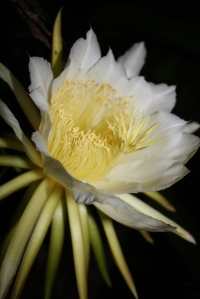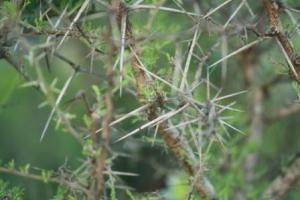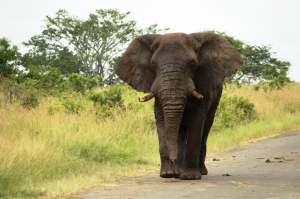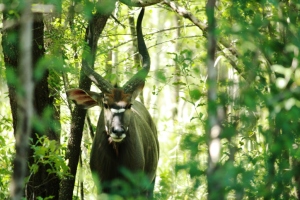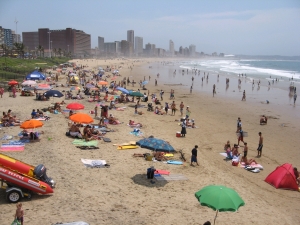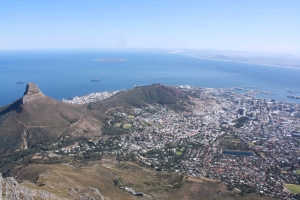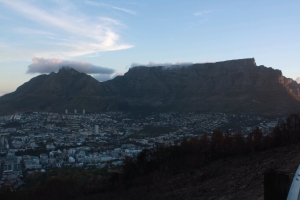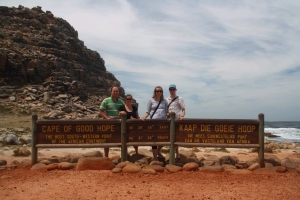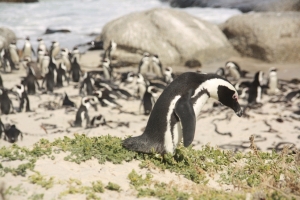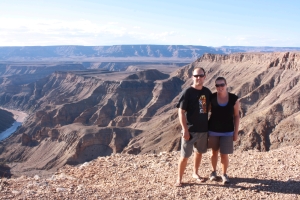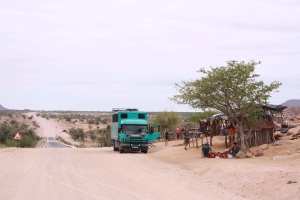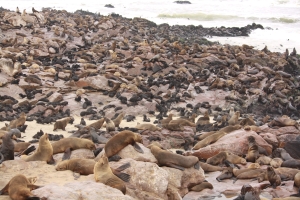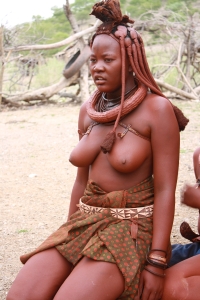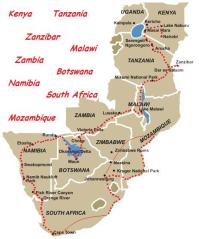After 3 days relaxing in swakopmund; reading, sleeping in a real bed, having endless hot showers, eating from fully stocked supermarkets, browsing the web on our first high speed internet and 2hrs quad biking in the desert (SO AMAZING!!) we moved onto the last section of our overland adventure.
The Namib desert is a vast area of sand dunes, dried up ancient lakes, dead trees and the constant driving winds. Starting in Swakopmund and traveling south all the way to South Africa it forms a harsh boundary bordering the rough Atlantic coast on the east and the high mountains on the east. For endless kilometers sand dunes stretch as far as the eye can see, their perfect lines and ever moving shadows create beautiful visual pictures and the deepest oranges, reds and browns mix together to create an eye stimulating experience. The desert seems like an inhospitable place where nothing could live but surprisingly Ostrich, Springbok, Oryx and countless other small creatures spend their days searching for water, eating what they can and sheltering from the burning sun.

Almost all of Namibia, Botswana and huge parts of South Africa are classed as either desert or semi desert, defined by the amounts of rainfall they receive a true desert never really gets any more than 20mm per year and a staggering 3500mm of evaporation, whereas a semi desert can get huge amounts of rain but that is equaled by the same amount of evaporation.

As we traveled south from the coast the scenery changed dramatically and slowly the stony gray expanse gave way to waterless plains then dry arid mountains, eventually the desert appeared and the glow of red sand dunes illuminated the sky as the sun set. The next morning we left camp well before the sun was up and drove further into the huge sand dunes up a dry river valley. Sossusvlei, known by the bushman as ¨where people disappear¨, is in the heart of the desert and surrounded by towering sand dunes. Interestingly a sand dune can not get any higher than 350m (due to high winds) and no steeper than 35 degrees.

Arriving at dune 45, we jumped out of the truck and headed off to climb our mini Mt Everest, after about 45mins of 2 steps forward, 1 step back we eventually made it to the summit in time to watch the sunrise. Slowly the visually lifeless desert came to life in color. The run back down was much faster only taking some of us 4mins!
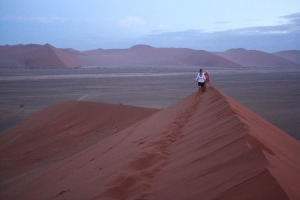

We carried on further into the sand covered world and transferred into 4wds for the last few kilometers before another 20min walk to a dry lake filled with dead tress, a great backdrop for photography. By now with the sun high in the sky and its piercing rays seemingly burning through clothing it was time to head back to the shade of trees and the promise of a cold shower.
That afternoon we drove to a nearby farm and camped in the dead set middle of nowhere. With nothing but a bush toilet and the truck to get us through we set about hiding from the sun until it started to cool off. In the late evening the farmer came to meet us and took us on a 1.5hr walk/talk about the desert and the people that live in it.
The bushman of Southern Africa were a nomadic group who lived off the land and nothing else, carrying no possessions at all apart from hunting equipment they moved from place to place hunting, gathering and exploring. They were small people with an amazing ability to live in the hottest and driest climates, bushman men never ever actually drank water, saving this for woman and children only, instead they survived off the moisture from plants and the raw meat they killed. With their yellow skin they could sneak to within 5m of an animal and fire a tiny poisoned dart at it, following it until it finally dies. Often the bushman would have to last 4-5 days between meals and due to this they developed very loose stomach skin.
One of the first lessons a bushman taught his son was never to kill a mother animal, simply by killing a mother you killed potential food and thus made life for your own children harder. A way of thinking that could be compared to how we westerners are treating the Earth for future generations.
Amazingly that night we camped right next to an ancient bushman camping spot, the caves roof was black from their cooking fires, the stones were smooth from being used as tools and small pieces of ostrich egg shell that were used for jewelery could be seen scattered on the floor.



